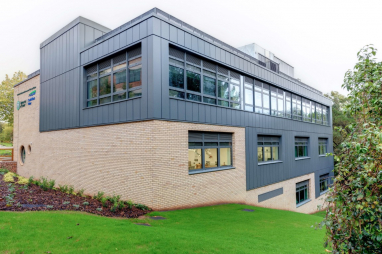- nike outlet at tanger outlet mall
- We all know how valuable our Air Jordans are once we pick them up
- Yeezys - Jordans, Musee-jacquemart-andre News, Jordan Essentials Statement Hoodie - release dates & nike.
- nike navy acg fw18 , nike navy acg fw18 Low Release Date - SBD
- IetpShops , clima adidas performance adizero prime green screen , clima adidas performance adizero prime green screen 'Home' and 'Away'
- Usher Air Jordan 11 Gold Sample
- Travis Scott Air Jordan 1 High OG CD4487 100 Release Date Price
- kids air jordan
- air jordan 1 retro high og university blue 555088 134
- Miles Morales Shameik Moore Air Jordan 1 Spider Verse
- Home
- News and analysis
- Info hubs
- Events
- Video
- Case Studies
- About us
- Magazine
- Advertising
Produced for the industry by the Association for Consultancy and Engineering
Opinion
Infrastructure holds balance for a future of low carbon living

The infrastructure industry can make or break low carbon ambitions. Paul Toyne explains why it should care.
Improving our existing infrastructure in the UK is key to maintaining and improving people’s quality of life. Moreover, infrastructure is essential to keep our cities and urban areas competitive, functioning as centres for economic growth. I think we all understand these drivers, but how we achieve these improvements matters on several levels.
First: we have got to be able to afford it, and secondly it needs to provide capacity not just for today but for the future. But added to all the complexities is the need for sustainable design and low carbon construction that enables ongoing maintenance and operation without greenhouse gas emissions. Why is this important?
"The impact of infrastructure is projected to increase from 53 per cent of UK emissions in 2010 to over 80 per cent of the carbon reduction target in 2025, rising again to 90 per cent in 2050."
It is politically important: The UK has a legally-binding commitment to achieve an 80 per cent reduction in its carbon emissions by 2050. The Government has also committed to halving UK emissions during the 2023 to 2027 carbon budget period, relative to 1990.
Although there are no sector-specific targets, the infrastructure sector does have control of over almost one sixth of total emissions and therefore has a key role to play in contributing to the national reduction. The impact of infrastructure is projected to increase from 53 per cent of UK emissions in 2010 to over 80 per cent of the carbon reduction target in 2025, rising again to 90 per cent in 2050. This leaves very little room for all other areas of the UK economy, so if low carbon best practice is not rolled out across the sector, the UK's emissions targets will not be met.
It is financially important: Infrastructure that is locked into old technologies will likely incur higher running costs as increasing prices for fossil fuels and higher penalties for carbon emissions kick-in; eventually these assets could be unattractive for further investment and become stranded.
Of course there is a third important point, often forgotten: That is the imperative to manage a changing climate and a realisation that reducing the rate of climate change will help us with more time to adapt to the impacts that result.
So what is happening? The Infrastructure Carbon Review (ICR) published last November and developed by the British Treasury, the Department for Business, Innovation & Skills and the Green Construction Board (GCB) makes the case for action. It states that reducing capital and operational carbon makes good business sense:
• It reduces costs;
• It unlocks innovation and drives better solutions;
• It drives resource efficiency;
• It provides competitive advantage and export potential; and
• It contributes to climate change mitigation
The ICR called for clients to embed carbon reduction into procurement of infrastructure, making the case that the opportunities to reduce carbon are greater the earlier you started. The report also made a number of recommendations that, if followed by the sector, would lead to significant carbon reductions and cost savings.
Early contractor involvement, a key ICR recommendation, together with another recommendation - corporate leadership - feature in these projects, as does collaborative working with the whole supply chain involved in the project objectives.
At Balfour Beatty carbon reduction is a key to driving down costs, reducing environmental impacts and a prerequisite for winning work. We are already implementing many of the recommendations made by the ICR through application of the principles of carbon reduction on our infrastructure projects. Such projects cited by the ICR included the M25 widening, A21 Stocks Green bypass and the Olympic Aquatics Centre.
Early contractor involvement, a key ICR recommendation, together with another recommendation - corporate leadership - feature in these projects, as does collaborative working with the whole supply chain involved in the project objectives.
If all this is news to you, take heed, read the ICR as what is apparent is that the issue of carbon reduction is not going to go away. So the quicker we all embrace the need for action and effectively collaborate together the better for all of us it will be!





